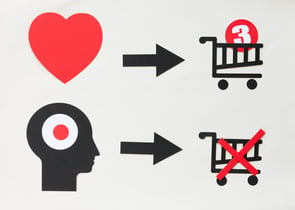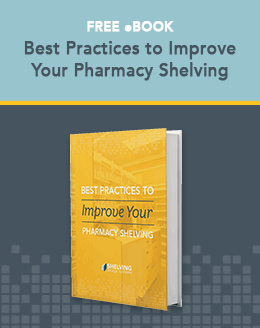 Studies have shown that customers in retail establishments make three basic types of purchases:
Studies have shown that customers in retail establishments make three basic types of purchases:
- Planned purchases, or those they come into your store with the intention of buying, often written on a list
- Companion purchases, or those they hadn't planned on making but that directly relate to their preplanned purchase items
- Impulse purchases, or those that are neither planned nor related to other purchased items, but those they're nudged into buying by sheer impulse upon sight (or even smell!). Think candy bars, chewing gum and magazines at the end of just about every grocery store counter
These impulse purchases are responsible for a significant portion of the consumer spending dollar. It's estimated that approximately 40% of store customers spend more than they had planned, which tends to support the belief that impulse buying is alive and well and worth pursuing for retail store owners and managers. Fortunately, a store's layout and the placement of enticing retail displays can increase impulse buying by engaging customers' attention and stimulating their senses.
Seeing is Believing… and Buying
The first step to improving customer impulse buying is increasing the visibility of the items you're trying to move. Retail displays should be prominently placed in locations where customers are most likely to see them. While the traditional placement for impulse buying retail displays is near the checkout counter, alternative locations can be to put them into close proximity to some of your store's hottest sellers. This can be done in conjunction with some brightly colored, prominent signage describing the "for sale" items or the current promotion incorporating them. When placed near your store's best sellers, it helps that the impulse items complement your hottest sellers.
The second step is displaying impulse items that are small, inexpensive, and easy to pick up and add to accumulated purchases. Trial sizes of various products fit these three criteria and are ideal impulse items. In summer, when sunglasses and hats are big sellers, trial sizes of suntan lotion and lip balm would both be great impulse items to place in proximity. Using limited time promotions, such as "this week only," can help impulse items move more quickly than special value offers such as "buy two get one free."
The Checkout Line
Lastly, different types of retail stores use different tactics for pushing impulse items, but almost every single one will have impulse purchase retail displays at the checkout line. Some of these cater to shoppers with young children who, as they're waiting in line to check out, will be faced with sweets, small toys, balloons, etc. Pharmacies may feature items that customers may need but have neglected buying, such as pain relievers, sleep aids, or Band Aids. Home improvement stores often display batteries at the checkout counter, and everyone knows that grocery stores love to place gossip magazines at this location, hoping customers will pick one up to look it over and then toss it into their basket to buy.
Many retailers hire consultants or psychologists to help sway customers into making purchases they might not have planned by the way the store is laid out, the way the shelving is set up urging foot traffic to move in a certain direction (usually counter clockwise), and the way colors, lighting, signage, wall and floor surfaces, and more are precisely designed.
Encouraging impulse buys is a science, and as a store owner, if you're not utilizing some of these techniques, you may be missing out on creating a greater sales volume. Impulse purchases can play a heavy role in the equation and should be promoted to the max.




